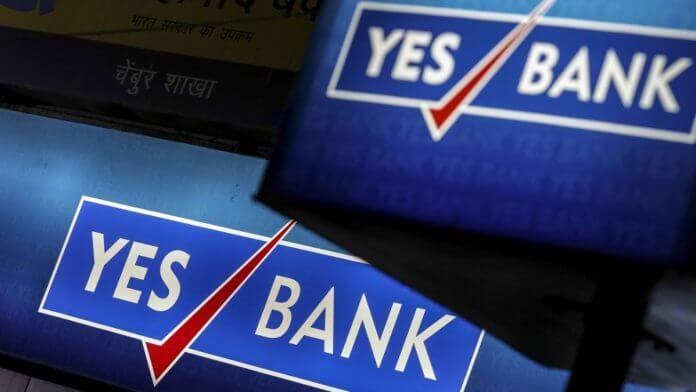This article is written by Pooja Dilip Pawar, from NBT Law College, Nashik.
Table of Contents
Introduction
A bank plays an important role in maintaining the economical condition of the country. The Yes Bank crisis created panic among the people in March 2020 as it was the biggest private sector bank. The failure of a bank, be it a public sector bank or a private sector bank, can affect everyone. In March 2020, news came out that there is a high chance of a Yes bank collapse which caused panic among the depositors. The Reserve Bank of India decided to solve this issue. Reserve Bank of India superseded Yes Bank board of directors for a period of 30 days.
A brief history of Yes Bank
Yes Bank provides banking and financial services. There are around 1050 branches all over India. Yes Bank Ltd. was incorporated on November 21, 2003 by Rana Kapoor and late Ashok Kapoor.
The Bank got the certificate of commencement of business on January 21, 2004. In the year 2005, they forayed into retail banking with the launch of the International Gold and Silver debit card in partnership with MasterCard International. In June 2005, they came out with the public issue and their shares were listed on the stock exchanges.
In December 2005, the Bank bagged the Corporate Dossier award from Economic Times. In the year 2006, the Bank received Financial Express Awards for India’s Best Banks. In April 2007, they made a tie-up with the Agriculture Insurance Company of India (AIC).
This is to be noted that, Yes Bank was the first institution, globally, which has received funding through IFC’s Managed Co-Lending Portfolio Program and it is also the first Indian bank to raise a loan under IFC’s A/B loan facility. Yes bank was ranked number 1 bank in the Business Today-KPMG Best Banks Annual Survey 2008.
In September 2014, Yes Bank announced it had received a ratings upgrade from credit rating agency ICRA and CARE for its various long-term debt programs. On December 18 2017, Yes Bank made its entry in the 30-share S&P BSE Sensex.
In 2017, RBI noticed bad loans of Yes Bank. In 2018 RBI ordered Rana Kapoor to vacate the chair of CEO. In November 2018 Chairman and two independent directors resigned from the post. This was the time when Yes bank credit rates decreased. In 2019, November Rana Kapoor’s house sold away all his shares of Yes Bank at a total value of 142 crores.
Since the bank was lending money at high risk, the loan increased in such a way that led to the bank crisis.
Reasons that led to Yes Bank crisis
Yes bank is one of the biggest banks in India. India has both the public sector and private sector banks. Yes bank faced a hard situation during the year 2020. On 5 March 2020, a 30 days moratorium was imposed on Yes Bank by RBI, superseded the private sector lender board, and appointed Prashant Kumar as an administrator over it.
During this Moratorium, depositors were allowed to withdraw up to 50,000 per person. Further, the main object of the Reserve Bank of India or the Government of India is to safeguard the money of depositors.
A large amount of loan
On 31st March 2014, Yes Bank book of accounts reflected loan as 55,633 crores, and the deposit book data was 74,192 crores. Since then loan growth increased highly and went to 2.25 trillion as of Sept 30 of 2019.
The Asset quality of the bank also worsened. According to global financial company UBS, it has been pointed out that Yes bank is giving stressed loans to such companies which cannot repay the loan in time. It was a high risk taken by Yes Bank. Such loans are called bad loans.
Loan to firms and companies and NPA’s
In the 2015 UBS report, a global financial service company made an analysis and found that assets quality of Yes Bank had loans more than its net worth to such companies that are unlikely to repay the loan amount.
Also, Yes Bank continued to give loan amounts to several big firms and companies that resulted in the start of the crisis. Such companies were DHFL, CCD, Essel group, Reliance group of industries etc. because such corporate companies cannot repay the loan amount in a limited period. Around 25% of loans were given to the non-banking financial companies, real estate firms, and construction sector. These sectors are the more struggling sectors of India during the past few years.
The bad loans of Yes Bank are estimated to be around Rs.40000 crores (Gross NPA). While the Gross NPA was around 19% of advances, Net NPA was around 6% of loans at the end of December 2019. And it is the time when performing assets (NPA’s) started rising in Yes Bank.
A large number of withdrawals
While the loan amount was increasing at a high rate, on the other hand, withdrawals were also increasing. The bank showed steady withdrawals due to this burden on the balance sheet and slowly the bank collapsed.
Bank run situations have been raised as people panicked seeing news relating to the Yes Bank crisis. Bank run situations arise when a large number of depositors withdraw their money during the same period or within a specific period. A bank run typically results due to panic rather than true insolvency.
Financial Position of Yes Bank
The share price of the Yes Bank was Rs.400 in 2018 which is now standing at just 16.60 as of 6 March 2020. The financial condition deteriorated due to its inability to raise capital to address potential loan losses.
Huge Liabilities
The Yes Bank has a total liability of 24 thousand crore dollars. The bank has a balance sheet of about $40 billion (2.85 lakh crore rupees). It had to pay $ 2 billion to increase the capital base. (As per 2019 data) These were some reasons behind the pitiable condition of the yes bank.
Improper governance
Yes bank is a private sector bank. It has faced several governance issues that led to this crisis. In January 2020, Uttam Prakash Agarwal independent director quit Yes Bank, citing governance of Yes Bank due to its degradation.
Bank mergers
After the Reserve Bank of India put a Moratorium of 30 days on Yes Bank in March 2020, finance minister Nirmala Sitharaman announced that the State Bank of India will buy 49% stake in Yes Bank. But Chairman Rajnish Kumar clarified that there will be no merger between the banks.
After the announcement of the merger, the onus was on India’s largest bank SBI to save Yes Bank from the crisis.
He said, “there is absolutely no question of merger.” There was no such intention of a full merger of Yes Bank with SBI, which have been cleared by the newly appointed administrator on CNBC TV18.
The investment made by the State Bank of India was the best deal to cope with the current situation. Depositors of Yes bank were not confident that their money is safe. Later on, they realised that their money was in safe hands. The survival of Yes Bank was a must in banking history.
Corporate Loans
Yes Bank founder Mr. Rana Kapoor was arrested on allegations that he has approved corporate loans. The total number of non-performing assets was 42000 crores. A large number of customers of Yes Bank were from corporate sectors. Such companies took loans from Yes Bank and later they were at loss. It affected the Bank because companies were unable to repay the loan in time.
Corporate debt and divergence in credit ratings
Yes Bank as a commercial bank provided a complete range of products services and digital technology products etc. It also provided loans to companies and firms. Such companies were DHFL, CCD, Essel group, reliance group of industries etc. Because of the crisis, Yes bank credit trade downgraded in March 2020. The main reason for imposing a Moratorium on Yes Bank was a lack of increase in the capital of Yes Bank.
Due to the downgrading of credit rates, it was also difficult for banks to raise capital. Yes Bank’s financial position was low. There were serious lapses in corporate governance of Yes Bank.
Actions taken by the Reserve Bank of India against Yes Bank
- Overall Bank management was taken over by the Reserve Bank of India.
- The Reserve Bank of India had imposed 30 days of Moratorium on Yes Bank. There was no need to invest more capital to deal with NPA’s situation. The bank’s financial position was inadequate to raise the capital. Also, there was a lapse in corporate governance at the bank. This Moratorium was a temporary suspension on authorities of lenders. Due to this Moratorium situation, depositors were allowed to withdraw up to Rs.50,000 per person and up to 5 lakhs in medical or emergencies. There’s a small relief to depositors in cases of emergencies.
- The RBI announced a draft ‘Scheme of Reconstruction’ that entails the State Bank of India (SBI) investing capital to acquire a 49% stake in the restructured private lender.
Future ahead of Yes Bank
- A new board was set up by RBI for regulating the governance of the bank. The RBI has a draft reconstruction plan for YES Bank which proposes that depositors’ funds would be protected.
- Loans should be given to companies who shall repay the loan and no bad loan situation could be raised in the future.
- The employees would also have the same service conditions, including remuneration, at least for one year.
- The SBI, which has received board approval to invest in YES Bank, will pick up to a 49% stake, according to the scheme, at a price that is not less than Rs.10 for each share having a face value of Rs.2.
- Yes bank was saved from its degradation and. By June 2020, Yes Bank was back on track to its business. Also, the bank knows how to gain customers.
- The Bank management has been improving over the past few months. There is no doubt that Yes Bank is the biggest bank in the private sector and even most UPI apps are dependent upon Yes Bank. As such, apps were facing issues that week when the news came out.
Conclusion
Yes bank is a private sector bank. In March 2020, Yes Bank faced a historical crisis. There are various reasons that led Yes bank to this crisis, they are, there were a large number of bad loans given by banks and depositors have withdrawn large numbers of amounts from the bank. There was no balance between the loan sheet and the depositors’ sheet. RBI put a 30 days moratorium on Yes Bank to save it.
A major effect of the yes bank crisis was that there was a big chance that other financial institutions could collapse. But the Reserve Bank of India took initiative and saved Yes Bank from major collapse.
References
- https://m.jagranjosh.com/general-knowledge/reasons-behind-the-yes-bank-crisis-1583503237-1
- https://www.business-standard.com/about/what-is-yes-bank-crisis
- https://www.thehindu.com/business/yes-bank-crisis-explained/article31030273.ece
LawSikho has created a telegram group for exchanging legal knowledge, referrals and various opportunities. You can click on this link and join:










